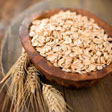The diet that people call the 'fry-up diet', The Atkins diet involves limited consumption of carbohydrates to switch the body's metabolism from metabolizing glucose as energy over to converting stored body fat to energy a process known as ketosis. In the two week introduction, food is very limited but you'll find yourself eating many foods the traditional dieter would die for like meat, eggs and cheese. So if you are a meat lover this is the diet for you. You can even cook with butter, put mayonnaise and on your salads (limited to loose leafy and 2-3 cups per day). You cannot eat any fruit and only quarter of a cup a certain cooked vegetables.
The diet does allow for adding fruits, vegetables, and whole-grain foods after the two-week induction period. However, even when some carbohydrates are introduced back into your diet you'll find yourself being forbidden from eating foods like pasta, white bread and cakes for life.
Then, over time, the transition from weight loss to weight maintenance is made by gradually increasing carbohydrates so long as gradual weight loss is maintained.
Exercise in all phases as part of a healthy lifestyle is now emphasized more than when the diet was first introduced.
Allowed Foods are as following:-
Meat, Poultry & Shellfish
Any meat including beef, lamb, pork, bacon; a juicy steak is a popular favorite! All poultry including chicken, turkey, goose and duck. If you fancy you can even eat pheasant, quail, ostrich or emu! All fish can be eaten in abundance. Any unprocessed shellfish can be eaten including crab, lobster, squid, oyster, clams, prawn and shrimps.
Vegetables
Many vegetables are allowed on the Atkins Diet. In fact, just about any vegetable you might wish to eat is permitted, with the exception of corn, potatoes, green peas, and other sweet or starchy vegetables. Dr. Atkins New Diet Revolution divides allowable vegetables into two groups: salad vegetables and other vegetables.
Fats
The beauty of this diet to me is that most fats are allowed! Yes you read that correctly. Cold-pressed vegetable oils are preferred, and it is important to include some source of omega-3 fatty acids, such as linseed oil or salmon. Butter is allowed but margarine is not. Olive oil, nut oils, seed oils, and vegetable oils are allowed. You may also include in cooking, any fat that is part of your meat. Happy Days!
Dairy
Most dairy products are permitted on the Atkins Diet with the exception of milk and yoghurts. In fact, it is recommended that you actually choose those that are full-fat and as low in carbohydrate as possible! Wow... that mean full fat cheeses are allowed whether hard or soft and diet cheese, spreads not be eaten. However, happily, all cream including cheese and butter may be eaten. Cheese: full-fat cow, goat, or sheep's milk cheeses, as well as soy cheese, are permitted, and it doesn't even matter if they are hard or soft cheeses. No diet cheese, cheese spread, processed cheese food, or whey cheese is allowed. Shame, hey I thought not.
Other permitted dairy: Heavy cream, light cream, sour cream, cream cheese, and butter are allowed. It actually encourages you to avoid fat-free or reduced fat options!
Condiments and Spices
It surprised me to learn that it is important to be careful when choosing condiments whilst on the Atkins plan. Sugar in any form is expressly forbidden, and most people are surprised to learn how many of their favorite condiments, dressings, and spice blends contain some form of sugar. For this reason, most salad dressings are not permissible unless you can find sugar and starch free options.
My take on this is you can easily make your own sauces and dressings that tasty without the use of sugar.
Drinks
You can drink almost any beverage whilst on the Atkins program. However, there are three taboos that must be adhered to and these are sugar in any form, caffeine, and fruit juice. You cannot have milk in your tea and coffee with weirdly, you can have cream!
Sweeteners
Any artificial, non-sugar sweetener is permitted on the Atkins food list. If you prefer a natural sweetener, you may use Stevia-- an intensely sweet herb that is available in most health food and grocery stores. Basically, all natural sugars including honey are prohibited. Now this where I would find the Atkins diet difficult; this would excludes cakes, biscuits, chocolate.
Conclusion
I adore meat, salad and other vegetables but I also love bread and chips. I just cannot imagine living for the rest of my life without eating another sandwich or piece of toast let alone never having another doughnut or cake. It would be possible for me to actually enjoy this diet for a short period whilst I lost weight but as for a life long diet... maybe it's not for me. How about you?
_________________________________________________________



















